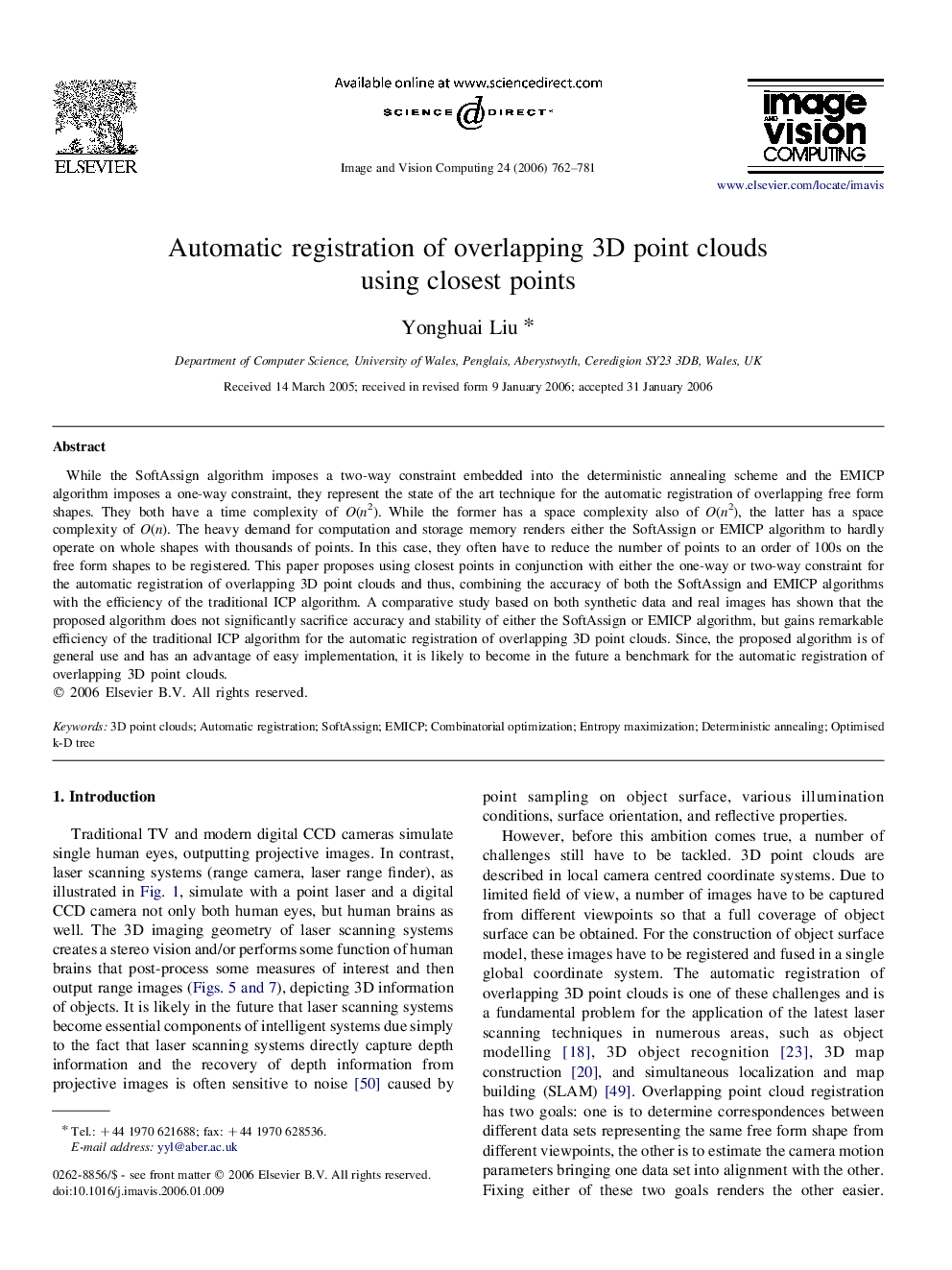| Article ID | Journal | Published Year | Pages | File Type |
|---|---|---|---|---|
| 529627 | Image and Vision Computing | 2006 | 20 Pages |
While the SoftAssign algorithm imposes a two-way constraint embedded into the deterministic annealing scheme and the EMICP algorithm imposes a one-way constraint, they represent the state of the art technique for the automatic registration of overlapping free form shapes. They both have a time complexity of O(n2). While the former has a space complexity also of O(n2), the latter has a space complexity of O(n). The heavy demand for computation and storage memory renders either the SoftAssign or EMICP algorithm to hardly operate on whole shapes with thousands of points. In this case, they often have to reduce the number of points to an order of 100s on the free form shapes to be registered. This paper proposes using closest points in conjunction with either the one-way or two-way constraint for the automatic registration of overlapping 3D point clouds and thus, combining the accuracy of both the SoftAssign and EMICP algorithms with the efficiency of the traditional ICP algorithm. A comparative study based on both synthetic data and real images has shown that the proposed algorithm does not significantly sacrifice accuracy and stability of either the SoftAssign or EMICP algorithm, but gains remarkable efficiency of the traditional ICP algorithm for the automatic registration of overlapping 3D point clouds. Since, the proposed algorithm is of general use and has an advantage of easy implementation, it is likely to become in the future a benchmark for the automatic registration of overlapping 3D point clouds.
